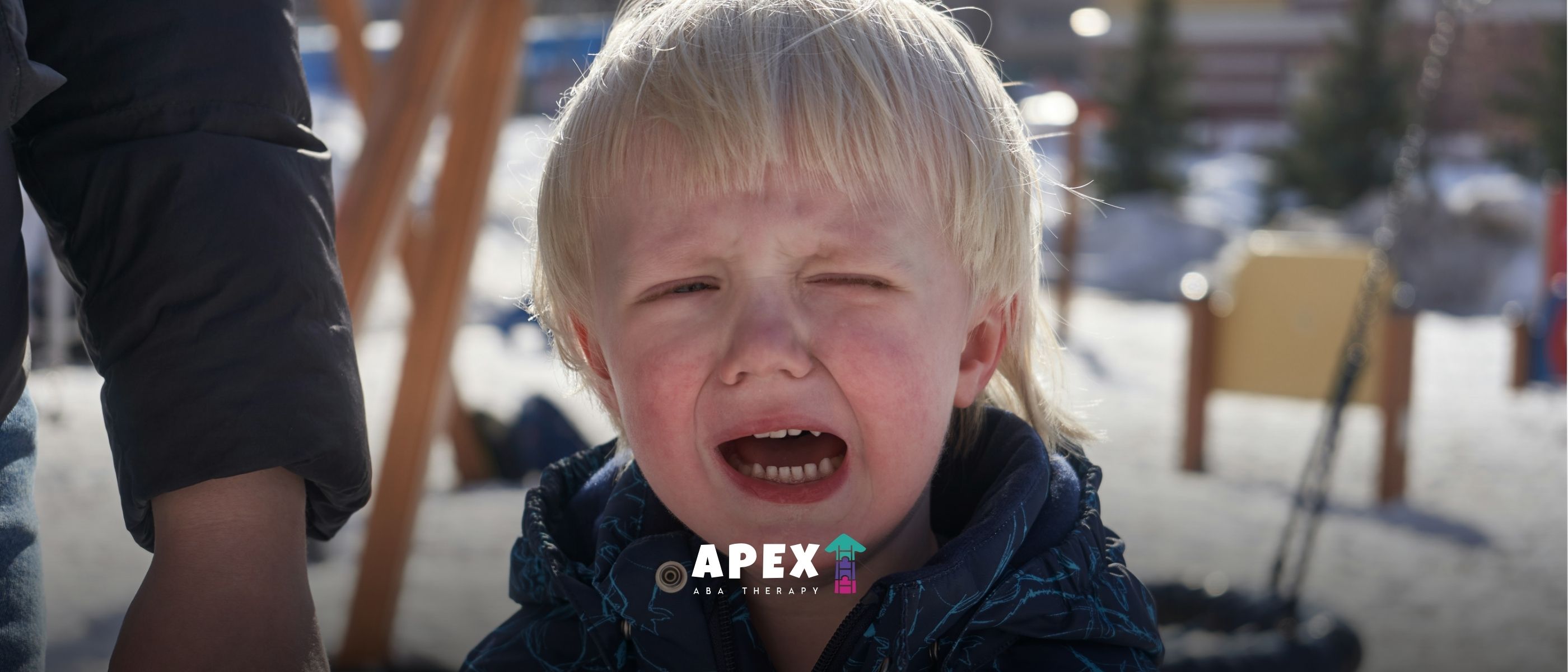Autism and PTSD Similarities and Differences
Unraveling the similarities and differences between autism and PTSD. Discover the connections that shape understanding and treatment.

Autism and PTSD Similarities and Differences
Understanding PTSD and Autism
To unravel the connection between post-traumatic stress disorder (PTSD) and autism, it is important to first gain an understanding of the prevalence, statistics, and risk factors associated with these conditions.

Prevalence and Statistics
Recent studies have shed light on the prevalence of PTSD among individuals with autism. A small 2020 study with 59 adults estimated that approximately 40% of the participants likely met the criteria for a PTSD diagnosis, which is significantly higher than estimates for the nonautistic population. Moreover, a larger 2021 survey of 687 autistic adults found that 44% of them met the criteria for PTSD.
These findings suggest that autistic individuals may be more prone to developing PTSD compared to the broader population. The potential reasons for this may be linked to how autism affects perceptions of danger and the prevalence of autism stigma and abuse [1].
Risk Factors
Various risk factors contribute to the development of both PTSD and autism. While the causes of autism are complex and multifaceted, some factors that may increase the risk include genetic predisposition, prenatal complications, and certain environmental influences.
When it comes to PTSD, risk factors can include experiencing traumatic events such as physical or sexual abuse, witnessing violence, or being involved in accidents or natural disasters. Additionally, factors like a history of mental health disorders, a lack of social support, and certain personality traits may also contribute to the development of PTSD.
For individuals with autism, the risk of developing PTSD may be elevated due to specific factors associated with the condition. Autistic individuals are more likely to experience stigma and abuse, which could contribute to the higher rates of PTSD observed in this population. Furthermore, previous research has shown that autistic individuals are more vulnerable to interpersonal violence compared to their nonautistic counterparts.
Understanding the prevalence, statistics, and risk factors associated with PTSD and autism provides a foundation for unraveling the connection between these two conditions. By exploring the overlapping symptoms and unique characteristics of each, we can gain further insights into their complex relationship.
PTSD and Autism: Overlapping Symptoms
When examining the relationship between post-traumatic stress disorder (PTSD) and autism, it's important to understand the overlapping symptoms that these conditions share. While they are distinct disorders, there are certain areas where their symptoms intersect. In this section, we will explore the overlapping symptoms of social interaction challenges, sensory sensitivities, and emotional regulation in both PTSD and autism.
Social Interaction Challenges
Both individuals with PTSD and autism may experience difficulties in social interaction. People with PTSD may have trouble trusting others, feel detached from loved ones, or avoid social situations altogether. Similarly, individuals with autism often face challenges in understanding social cues, maintaining eye contact, and engaging in reciprocal conversation. These social interaction difficulties can impact relationships, making it harder for individuals to form and maintain connections with others.
Sensory Sensitivities
Sensory sensitivities are another area where individuals with PTSD and autism share similarities. People with PTSD may become hypersensitive to certain sensory stimuli that remind them of their traumatic experiences. For example, loud noises or crowded spaces may trigger anxiety or distress. Similarly, individuals with autism often have heightened sensory sensitivities, experiencing discomfort or overwhelm in response to certain sounds, textures, or lights. These sensitivities can lead to sensory overload and impact daily functioning.
Emotional Regulation
Difficulties with emotional regulation are common in both PTSD and autism. Individuals with PTSD may struggle with managing intense emotions such as anger, fear, or sadness. These emotions may be triggered by memories or reminders of traumatic events. Likewise, individuals with autism may find it challenging to regulate their emotions, experiencing difficulties with emotional expression and understanding the emotions of others. These challenges can impact communication and relationships, making it harder to navigate social interactions.
Understanding the overlapping symptoms between PTSD and autism is crucial for accurate diagnosis and appropriate treatment. While these conditions may share certain characteristics, it's important to recognize their unique features as well. PTSD may present symptoms such as flashbacks, nightmares, and hypervigilance that are not typically seen in autism. Conversely, autism is characterized by difficulties in social communication and interaction, repetitive behaviors, and sensory sensitivities that are not typically observed in PTSD.
It's important to note that some evidence suggests that individuals with autism are more likely to develop PTSD compared to the general population, potentially due to factors such as autism stigma and abuse. Research indicates that a significant number of autistic individuals meet the criteria for a PTSD diagnosis, with estimates ranging from 40% to 44%. Additionally, autistic individuals may be more vulnerable to interpersonal violence compared to nonautistic individuals, further contributing to the higher rates of PTSD in this population.
By understanding the overlapping symptoms and unique characteristics of PTSD and autism, healthcare professionals can provide tailored support and interventions to individuals who may be experiencing both conditions.
Differences in Symptoms
While there are similarities between post-traumatic stress disorder (PTSD) and autism, it's important to recognize the unique symptoms associated with each condition. Understanding these differences can help in accurate diagnosis and appropriate treatment approaches.
Unique PTSD Symptoms
PTSD can manifest with symptoms that autism does not typically exhibit. These symptoms are often related to the experience of a traumatic event and can include:
- Flashbacks: Individuals with PTSD may experience intrusive and distressing memories of the traumatic event, causing them to feel as if they are reliving the experience.
- Nightmares: Recurrent nightmares related to the traumatic event are common in individuals with PTSD.
- Hypervigilance: People with PTSD may be constantly on high alert, easily startled, and overly aware of potential threats in their environment.
These unique symptoms of PTSD are closely linked to the individual's exposure to a traumatic event and the subsequent psychological impact it can have.
Unique Autism Symptoms
On the other hand, autism is characterized by symptoms that may not be present in PTSD. These symptoms are typically related to difficulties in social communication and interaction, as well as other behavioral patterns. Some unique symptoms of autism include:
- Difficulties with social interaction: Individuals with autism often face challenges in understanding and interpreting social cues, maintaining eye contact, and developing friendships. This can manifest as social withdrawal, difficulty maintaining eye contact, and limited reciprocal conversation.
- Repetitive behaviors: Autism is often associated with repetitive behaviors or restricted interests. These behaviors can range from repetitive movements (such as hand-flapping) to rigid adherence to routines or intense focus on specific topics.
- Sensory sensitivities: Many individuals with autism experience sensory sensitivities, where they may be overly sensitive or underresponsive to sensory input. These sensitivities can involve sensitivity to sounds, lights, textures, or other sensory stimuli in their environment.
These unique symptoms of autism contribute to the distinct challenges faced by individuals on the autism spectrum and help differentiate it from PTSD.
By recognizing the differences in symptoms between PTSD and autism, healthcare professionals can provide more targeted interventions and support for individuals with these conditions. It is essential to consider the individual's unique experiences and tailor treatment approaches accordingly, taking into account the specific challenges associated with each condition.
Impact of Stigma and Abuse
The impact of stigma and abuse on individuals with autism can have significant implications for their mental well-being, including an increased vulnerability to post-traumatic stress disorder (PTSD) and a higher likelihood of experiencing interpersonal violence.
Vulnerability to PTSD
Evidence suggests that individuals with autism are more likely to develop PTSD compared to the general population, potentially due to how autism affects their perceptions of danger and the prevalence of autism stigma and abuse. Data from studies indicate a higher prevalence of PTSD among autistic individuals than in the nonautistic population.
A small study conducted in 2020 with 59 adults estimated that 40% of the participants likely met the criteria for a PTSD diagnosis, which was significantly higher than estimates for the nonautistic population. Similarly, a larger survey in 2021 involving 687 autistic adults found that 44% of the participants met the criteria for PTSD [1].
Interpersonal Violence
Autistic individuals are more likely to experience stigma and abuse, which could contribute to the higher rates of PTSD observed in this population. Research indicates that autistic individuals frequently experience interpersonal violence more than nonautistic individuals. A study conducted in 2023 showed that previous research consistently demonstrated a higher likelihood of experiencing interpersonal violence among autistic individuals. Additionally, a survey conducted in 2021 found that 72% of the participants had experienced some form of assault [1].
The combination of stigma, vulnerability to abuse, and a higher likelihood of experiencing interpersonal violence can significantly impact the mental health of individuals with autism. These factors contribute to the increased risk of developing PTSD in this population. Recognizing and addressing these issues is crucial for supporting the well-being and overall mental health of autistic individuals.
Treatment Approaches
When it comes to treating individuals with PTSD and autism, there are unique challenges that require specialized approaches. Understanding these challenges and adapting therapeutic techniques is essential for providing effective support and improving the quality of life for individuals with these conditions.
Challenges in Treatment
Treating PTSD and autism can be complex due to the overlapping symptoms and the comorbidity of these conditions with other psychological disorders. According to Medical News Today, there is a lack of research on whether existing PTSD treatments are as effective for autistic individuals. This highlights the need for therapists to adapt their approach to accommodate the specific needs of individuals with autism and PTSD.
Standard behavioral approaches may not adequately address the mental health issues in individuals with autism spectrum disorder (ASD) and comorbid psychological disorders. Therefore, it is crucial to consider individual differences and tailor treatment plans accordingly.
Adapted Therapeutic Approaches
To overcome the challenges in treating PTSD and autism, therapists and mental health professionals have developed adapted therapeutic approaches. These approaches aim to address the unique needs of individuals with both conditions and improve their well-being.
One widely recognized therapeutic approach is Cognitive Behavioral Therapy (CBT). CBT helps individuals recognize and modify maladaptive thoughts and behaviors. However, for individuals with autism and PTSD, therapists may need to modify traditional CBT techniques to accommodate sensory sensitivities and challenges in social interaction.
Other adapted therapeutic approaches include:
- Sensory Integration Therapy: This therapy focuses on addressing sensory sensitivities commonly experienced by individuals with autism and PTSD. It aims to help individuals regulate their responses to sensory stimuli and enhance their ability to engage in daily activities.
- Social Skills Training: Social interaction challenges are common in both PTSD and autism. Social skills training can help individuals develop and improve their social communication skills, such as understanding nonverbal cues, initiating and maintaining conversations, and developing empathy.
- Trauma-Focused Therapy: This specialized form of therapy targets the traumatic experiences that contribute to PTSD symptoms. Therapists work with individuals to process and cope with traumatic memories, reduce avoidance behaviors, and develop healthier coping strategies.
- Medication Management: In some cases, medication may be prescribed to manage symptoms associated with PTSD or comorbid conditions. Medication can help with anxiety, depression, and other symptoms, but it should always be used in conjunction with therapy and under the guidance of a healthcare professional.
It's important to note that treatment approaches should be individualized, taking into account the specific needs and preferences of each individual. Collaborating with a multidisciplinary team of professionals, including psychologists, psychiatrists, occupational therapists, and speech therapists, can ensure a comprehensive and tailored treatment plan.
By adapting therapeutic approaches and incorporating individualized strategies, individuals with PTSD and autism can effectively manage their symptoms and improve their overall quality of life. Early diagnosis and intervention are crucial to prevent symptoms from worsening and to provide appropriate support.
Co-Occurrence and Risk Factors
Understanding the co-occurrence of post-traumatic stress disorder (PTSD) and autism is essential to shed light on the similarities and differences between these two conditions. Let's explore the occurrence of PTSD in individuals with autism and the influencing factors.
PTSD in Individuals with Autism
Research suggests that individuals with autism may have an increased vulnerability to experiencing PTSD. Some evidence suggests that autistic people are more likely to develop PTSD compared to the larger population, potentially due to how autism affects perceptions of danger and the prevalence of autism stigma and abuse.
Data from various studies indicate a higher prevalence of PTSD among autistic individuals compared to the nonautistic population. For instance, a small 2020 study with 59 adults estimated that 40% of the participants likely met the criteria for a PTSD diagnosis, significantly higher than estimates for the nonautistic population. In a larger 2021 survey of 687 autistic adults, it was found that 44% met the criteria for PTSD.
Influencing Factors
Several factors contribute to the increased risk of PTSD in individuals with autism. One crucial factor is the experience of stigma and abuse. Autistic individuals are more likely to experience stigma and are more vulnerable to abuse, making them more likely to experience interpersonal violence than nonautistic individuals.
The prevalence of PTSD in individuals with autism varies across studies, with estimates ranging from 11% to 84%. This wide range is partly due to differences in sample characteristics, diagnostic criteria, and assessment methods. Further research is needed to better understand the specific risk factors that contribute to the development of PTSD in individuals with autism.
By recognizing the co-occurrence of PTSD and autism and understanding the influencing factors, we can better support and provide appropriate interventions for individuals who may be dealing with these overlapping conditions. It is crucial to address the mental health needs of individuals with autism to improve their overall well-being and quality of life.
References
Frequently Asked Questions
.jpg)
Autism And Bed Wetting: Unlocking Solutions
Explore the connection between autism and bedwetting and find practical insights and solutions for parents and caregivers. Discover how understanding and support can make a difference in managing this common challenge for children and individuals on the autism spectrum.

Proven Examples of Smart Goals for Students with Autism
Unlock the potential of students with autism through proven examples of SMART goals. Set them up for success!
.jpg)
What is the Sensory Processing Disorder ICD-10 Code?
If you or someone you know has been diagnosed with Sensory Processing Disorder (SPD), you may have heard of the ICD-10 code. In this article, we'll explain what the SPD ICD-10 code is, what it means, and why it's important.

Understanding Vestibular Stimming in Autism
Demystifying vestibular stimming in autism: Understand the impact, strategies, and support for individuals. Uncover the power of self-regulation through stimming.

Do Amish Kids Get Autism?
Explore the prevalence of autism in Amish children and uncover the factors that may contribute to this phenomenon. Delve into the unique characteristics of Amish communities and their impact on autism rates.

Breaking Barriers: Free Sensory Toys for Autism That Make a Difference
Discover life-changing free sensory toys for autism! Unlock the power of sensory play for children with autism.

Famous People Thriving with Autism or Aspergers Syndrome
Discover the extraordinary journeys of famous people thriving with autism and Asperger's syndrome. Unveil the inspiring stories of icons who break stereotypes.

IEP Goals for Autism: Ultimate Guide
Unlock the potential: Constructing meaningful IEP goals for autism to support your child's growth and development. Discover strategies and examples!

Young Celebrities with Autism
Discover inspiring young celebrities with autism and their journeys in entertainment and advocacy.
.jpg)
Autism Hand Posturing: Causes, Types, and Management
Autism hand posturing refers to repetitive and often purposeless movements or postures of the hands and fingers seen in individuals with autism. These movements range from simple hand flapping to more complex finger twisting and tapping.

Distinguishing ADHD vs Autism Stimming
ADHD stimming vs autism stimming: Discover the motivations and characteristics behind these behaviors in individuals.

Addressing Rigid Thinking in Autism
Unlocking flexibility in autism! Discover strategies, therapy, and tools to address rigid thinking for a brighter future.

DSM 6 Release Date Revealed
Unlock the future with DSM-6! Discover the release date and anticipated changes in the mental health landscape.

Why Do Autistic People Rock?
Uncover insights with empathy, exploring the diverse ways rocking serves as a coping mechanism and sensory regulation for individuals on the autism spectrum. Join us in celebrating the beauty of neurodiversity, fostering understanding and appreciation for this distinctive aspect of autistic experience.

Signs Your Toddler Is Not Autistic
Discover reassuring signs that your toddler may not be autistic in this human-centered guide. Explore the joy of your child's unique developmental journey, celebrating their social engagement and communication skills.
.jpg)
Facial Features & Physical Characteristics Of Autism
Some researchers believe that these physical characteristics are related to the underlying neurological differences in individuals with autism.

The Three Main Causes of Autism: Exploring Genetics, Environment, and Brain Differences
Autism is influenced by genetics, environmental factors, and brain differences. Learn how these three causes contribute to the development of the condition.

What are the Common Behaviors of Autism?
Autism behaviors can vary widely. Learn about the most common traits, from social difficulties to sensory sensitivities, and how ABA therapy can support progress.

What Age is Too Late for ABA Therapy?
It’s never too late to start ABA therapy. Discover how children, teens, and adults can still make meaningful progress with personalized ABA support.

Is In-Home ABA the Right Fit for Your Child? Here’s What You Need to Know
In-home ABA therapy offers a tailored approach to support your child’s development. Learn how it can improve key skills like communication, social interaction, and more.

How Families Can Make ABA Therapy a Positive and Successful Experience
Learn how families can ensure ABA therapy is a positive, successful experience. Discover tips for involvement, consistency, and support to make ABA effective.

Can a Child Have Autism and Still Talk Normally?
Can a Child Have Autism and Still Talk Normally?

What Are the Red Flags for Autism in a 2-Year-Old?
Autism Red Flags in 2-Year-Old Children | Apex ABA

Is Autism a Lifelong Condition?
Is Autism a Lifelong Condition? Understanding The Journey

Best Age to Start ABA Therapy & What Parents Should Know
Best Age to Begin ABA Therapy for Children | Apex ABA

What’s the Difference Between High-Functioning Autism and Asperger’s?
Difference Between High-Functioning Autism and Asperger’s

ABA Therapy Enhancing Social Skills: A Key to Improved Communication and Interaction for Children with Autism
How ABA Therapy Helps Children Build Social Skills

Misconceptions About ABA Therapy: Clearing Up the Myths
Common Misconceptions About ABA Therapy | Apex ABA

What Does It Mean to Be “On the Spectrum”?
What Does It Mean to Be on the Autism Spectrum? | Apex ABA

Understanding the Power of Functional Behavior Assessment ABA
Effective ABA Techniques for Behavioral Intervention

Discover How ABA Helps ADHD in Your Child’s Life
How ABA Therapy Helps Children with ADHD | Apex ABA

Life-Changing ABA Therapy Case Studies You Need to Know
Real Success Stories from ABA Therapy Journeys | Apex ABA

Can Children “Outgrow” Autism?
Can Children Outgrow Autism? Understanding the Facts

Is Autism a Mental Illness or a Developmental Disorder?
Mental Illness or Developmental Disorder Explained

Is Autism More Common in Boys Than Girls?
Autism in Boys vs Girls: What the Research Reveals

What is the Difference Between Autism and Sensory Processing Disorder?
Autism vs Sensory Processing Disorder Differences | Apex ABA

What's the Difference Between Autism and Speech Delay?
Autism vs Speech Delay & Key Differences Explained | Apex

ABA Therapy in North Carolina: A Complete Guide for Families
Learn everything about ABA therapy in North Carolina, including services, costs, insurance coverage, and how to choose the best ABA provider in North Carolina.

ABA Therapy vs Preschool: Making the Right Choice Explained
Learn the key differences between ABA therapy and preschool to help you choose the best option for supporting your child’s early learning and development.

Which Personality Type Is Most Likely to Be Autistic?
Which Personality Type Is Most Likely to Be Autistic? | Apex ABA

Why Consistency Matters: What Happens If ABA Therapy Ends Prematurely
What Happens If ABA Therapy Is Stopped Too Early? | Apex ABA

How Can You Gain an Autistic Person’s Attention? Tips for Meaningful Connection
How Can You Gain an Autistic Person’s Attention?

Sensory Sensitivity and Sixth Sense: What Autism Research Shows
Do Autistic People Have Sixth Sense? | Apex ABA

What Happens If Autism Is Left Untreated?
Can Autism Get Worse If Untreated? | Apex ABA

What Not To Do With An Autistic Child: Avoid These 10 Mistakes
What Not To Do With An Autistic Child? | Apex ABA

Coping with Regressive Autism: Tips for Parents
What is Regressive Autism? | Apex ABA

Do Autistic Kids Live with Parents Forever? Here’s the Reality
Do autistic kids live with parents forever? Discover the facts about independence and living arrangements in autism with expert-backed insights.

Red Flags in ABA Therapy: What Parents Must Watch For
What are the red flags in ABA therapy? Learn to identify warning signs for safe, effective autism treatment in this blog.

Can You Go from Level 3 Autism to Level 1? Is It Possible?
Can you go from level 3 autism to level 1? Learn about progress, therapy, and support options with expert help from Apex ABA.

Autism vs Introversion: How to Tell the Difference
Is it autism or just introversion? Learn the key differences and signs with expert insights from Apex ABA.

ABA for Managing Transitions: Tips to Ease Change for Kids
Learn how ABA for managing transitions helps children with autism handle change smoothly.

Understanding the 7 Dimensions of ABA for Better Outcomes
Discover the 7 Dimensions of ABA and how they can lead to better outcomes.

5 Unique Autistic Love Languages You Should Know About
Discover the 5 unique autistic love languages that can enhance your relationships.

Transforming Futures: Improving Lives of Kids with Autism
Discover how innovative strategies are focused on improving lives of kids with autism.

ABA Therapy Techniques for Addressing Repetitive Behaviors in Autism
Harnessing ABA Strategies to Tackle Repetitive Behaviors in Autism

The Role of ABA Therapy in Enhancing Communication Skills
Transforming Communication for Children with Autism Through ABA Therapy

How ABA Therapy Supports Effective Communication in Nonverbal Children
Unlocking Speech Through ABA: Transformative Paths for Nonverbal Children

How to Help Your Child Transfer Skills Learned in ABA Therapy to Real Life
Unlocking Real-World Success for Children in ABA Therapy

How ABA Therapy Helps Children Develop Better Organizational Skills
Empowering Children with ABA Therapy for Enhanced Organizational Skills

The Importance of Creating a Structured Routine in ABA Therapy
How Structured Routines Transform ABA Therapy for Autism

The Role of ABA Therapy in Developing Conflict Resolution Skills
How ABA Therapy Transforms Conflict Resolution Competence

The Importance of Generalization in ABA Therapy for Autism
Unraveling the Role of Generalization in Enhancing ABA Therapy Outcomes

Why ABA Therapy is Crucial for Parents of Children with Autism
The Transformative Impact of ABA Therapy on Families with Autistic Children

How to Involve Parents in the ABA Therapy Process
Maximize Parent Engagement in ABA Therapy for Better Outcomes

What are the Core Principles of ABA Therapy?
Exploring the Cornerstones of Applied Behavior Analysis

Why Communication is Key in ABA Therapy for Autism
The Crucial Role of Communication in ABA Therapy for Autism

Why ABA Therapy Works for Children with Autism Regardless of Severity
Effective ABA Interventions for All Levels of Autism

Why It’s Important to Maintain a Balanced Approach to ABA Therapy
Balancing Effectiveness and Ethics in ABA Therapy

The Role of ABA Therapy in Developing Adaptive Behavior Skills
Exploring How ABA Therapy Transforms Lives

The Benefits of Combining ABA Therapy with Speech Therapy
Maximizing Development with Integrated Therapy Approaches

What to Expect During an ABA Therapy Session
Demystifying ABA Therapy Sessions: A Comprehensive Overview

How ABA Therapy Enhances Cognitive Functioning in Children with Autism
Exploring the Influence of Applied Behavior Analysis on Autism Cognition

How ABA Therapy Helps Children with Autism with Transitions Between Activities
Easing Transitions for Children with Autism: The Role of ABA Therapy

How to Foster Cooperation Between Parents and Therapists in ABA Therapy
Building Effective Partnerships in ABA Therapy

The Role of Positive Reinforcement in ABA Therapy
Exploring the Impact of Positive Reinforcement in Modern ABA Therapy

Why ABA Therapy is Effective for Children of All Ages
Understanding the Reach and Impact of ABA Therapy Across Age Groups

How to Support Your Child’s Emotional Growth with ABA Therapy
Harnessing ABA Therapy for Enhancing Emotional Development in Children with Autism

The Role of ABA Therapy in Enhancing Peer Relationships for Children with Autism
Harnessing ABA Therapy to Boost Social Connections Among Autistic Children

How to Overcome Common Challenges in ABA Therapy
Navigating Hurdles in ABA Therapy: Strategies and Solutions

How to Manage Behavioral Expectations with ABA Therapy
Understanding Applied Behavior Analysis in Behavioral Management

How ABA Therapy Promotes Emotional Regulation in Children with Autism
Unlocking Emotional Balance: ABA Therapy's Role in Autism

How ABA Therapy Improves Social Skills in Children with Autism
Harnessing ABA Therapy to Enhance Social Competency in Autistic Children

The Role of ABA Therapy in Classroom Success for Children with Autism
Harnessing ABA for Academic and Social Growth in Autism

The Importance of Evaluating and Revising ABA Therapy Goals Regularly
Regular Evaluations: The Cornerstone of ABA Therapy Success

How to Choose the Right ABA Therapy Program for Your Child
Finding the Perfect ABA Therapy Fit for Your Child

The Role of Behavior Analysts in Implementing ABA Therapy
Understanding the Vital Contributions of Behavior Analysts in ABA Therapy

The Role of RBTs (Registered Behavior Technicians) in ABA Therapy
A Closer Look at the Essential Work of RBTs in ABA Therapy

What Makes ABA Therapy Effective for Different Learning Styles?
Unraveling the Flexibility and Effectiveness of ABA Therapy

Understanding the Importance of Data Collection in ABA Therapy
The Role of Data in Shaping Effective ABA Therapy

How ABA Therapy Helps with Toilet Training in Children with Autism
Unlocking Independence: ABA's Role in Autism Toilet Training

The Importance of Encouraging Natural Play in ABA Therapy
Revolutionizing ABA Therapy with Natural Play

How to Make the Most of ABA Therapy at Home
Enhancing ABA Therapy Practices Within Your Home

How to Make ABA Therapy Fun and Engaging for Children with Autism
Transforming ABA Therapy into a Fun Learning Journey

The Role of ABA Therapy in Addressing Verbal and Nonverbal Communication in Autism
Enhancing Communication Skills in Autism Through ABA Therapy

Understanding the Role of Family in ABA Therapy for Autism
The Crucial Impact of Family Engagement in Autism Therapy

How to Handle Setbacks and Challenges in ABA Therapy
Navigating Difficulties and Setbacks in ABA Therapy for Children

How ABA Therapy Can Help Children Build Stronger Relationships with Peers
Unpacking the Influence of ABA Therapy on Peer Relationships in Children

Understanding the Concept of Shaping in ABA Therapy
Demystifying Shaping Techniques in Applied Behavior Analysis

How ABA Therapy Enhances Independent Living Skills in Autism
Unlocking Independence: The Role of ABA Therapy in Autism
.jpg)
90+ Reading Statistics, Facts and Demographics
In this article, we will dive into 60 reading statistics that shed light on the importance of reading and its impact on different aspects of life.



